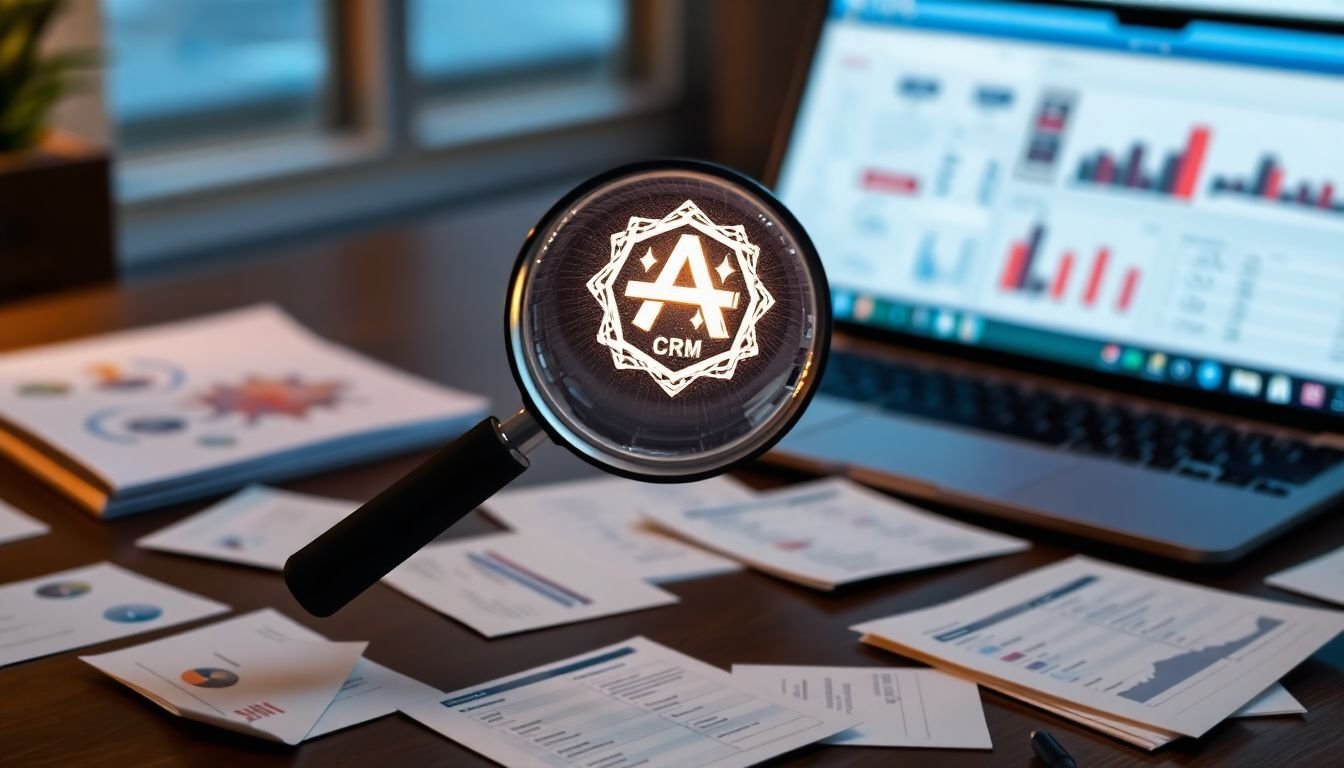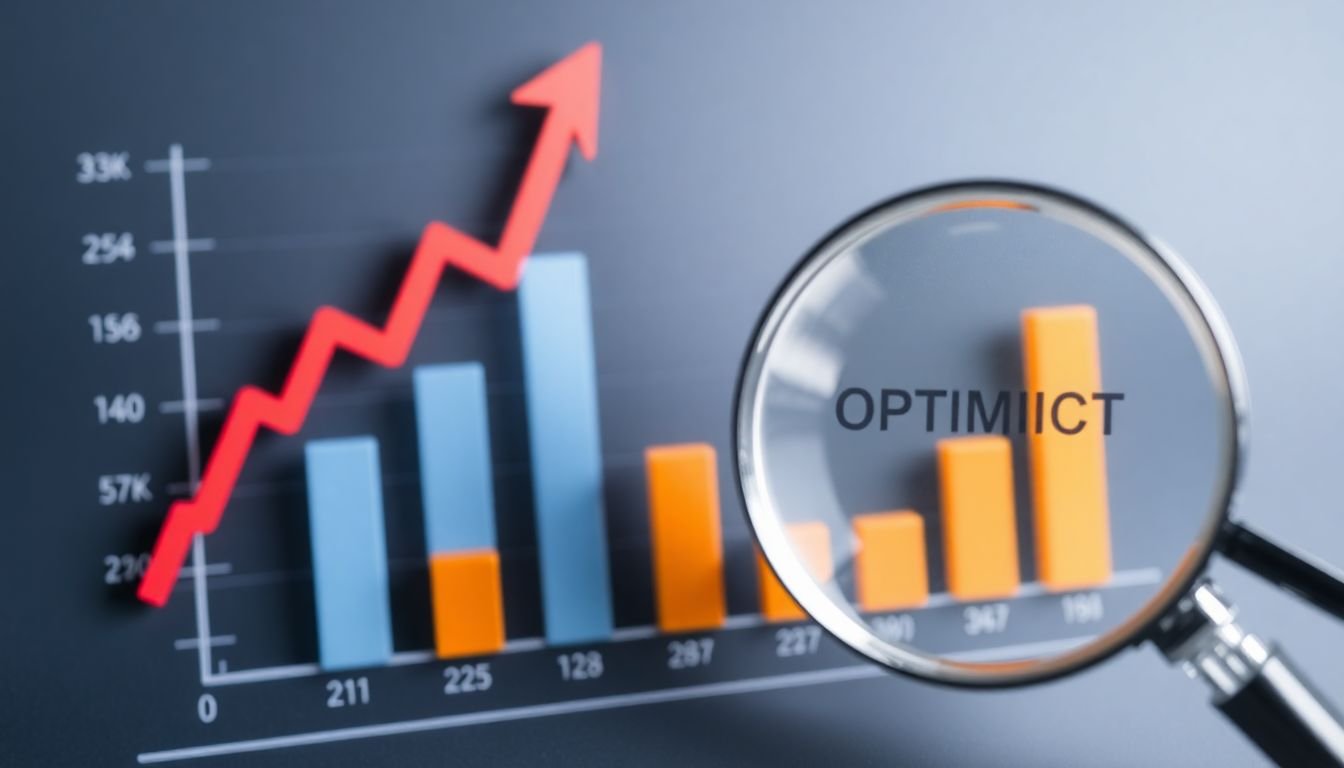
Table of Contents
In the dynamic world of data-driven marketing, one of the most pressing challenges businesses face is transforming cold, unqualified data into hot, sales-ready prospects. This alchemical process, known as lead generation, is not merely about collecting contact information; it’s about identifying, nurturing, and qualifying leads that are most likely to convert. According to a study by MarketingSherpa, companies with mature lead generation processes generate 50% more sales-ready leads at a 33% lower cost per lead. So, the question is, are you ready to turn your cold data into gold?
This article, ‘Lead Generation Alchemy: Transform Cold Data into Hot Prospects with These 7 Strategies’, is your comprehensive guide to mastering the art and science of lead generation. We’ll delve into data-driven marketing techniques that will help you qualify your prospects, understand their needs, and guide them through the sales funnel. By the end of this article, you’ll not only agree that effective lead generation is the lifeblood of any business, but you’ll also have a clear promise of seven powerful strategies that can revolutionize your lead generation process.
Imagine being able to predict which leads are most likely to convert, personalize your marketing messages to resonate with each prospect, and automate your lead qualification process. Sounds like a dream? It’s not. These are real strategies that successful businesses are using today to generate high-quality leads and boost their sales. So, let’s roll up our sleeves and dive into the fascinating world of lead generation alchemy. By the end of this article, you’ll have a clear roadmap to transform your cold data into hot prospects, ready to be converted into loyal customers.
Unlocking the Power of Data-Driven Marketing for Effective Prospect Qualification
In the dynamic landscape of modern business, data has emerged as the new currency, and data-driven marketing is the key that unlocks its full potential. At the heart of this transformation lies the critical process of prospect qualification, where the power of data analytics can significantly enhance effectiveness and efficiency. By harnessing the wealth of information at our fingertips, we can gain unprecedented insights into our target audience, enabling us to qualify prospects with unparalleled precision. This data-driven approach allows us to move beyond mere demographics and delve into the intricate details of consumer behavior, preferences, and needs. Through advanced analytics, we can identify patterns, predict trends, and make data-driven decisions that resonate with our audience. This not only streamlines the qualification process but also ensures that our marketing efforts are focused, targeted, and ultimately, more successful. In essence, unlocking the power of data-driven marketing for effective prospect qualification is about turning raw data into actionable insights, transforming the way we engage with our prospects, and driving business growth in the process.

The Alchemy of Lead Generation
In the realm of digital marketing, there exists an art akin to alchemy, a process that transforms cold, unengaged data into hot, eager prospects. This is the concept of lead generation alchemy, a practice that combines data, strategy, and creativity to fuel business growth.
The process begins with the acquisition of raw data, much like the alchemist’s initial collection of base metals. This data, though valuable, is often cold and unengaged, lacking the spark of interest that drives action. However, in the hands of a skilled marketer, this data can be transformed.
Enter data-driven marketing, the philosopher’s stone of our metaphor. It’s the key to understanding and engaging with this data, turning it from a mere list of names and numbers into a pool of potential customers. This involves segmenting the data, understanding the unique needs and preferences of each group, and tailoring messages to resonate with them.
But how does one go about this transformation? Here are a few steps:
- Data Segmentation: Divide your data into distinct groups based on shared characteristics. This could be demographics, behavior, or interests.
- Personas Development: Create detailed, fictional representations of your ideal customers. This helps in understanding and engaging with your audience on a deeper level.
- Content Creation: Develop content that speaks directly to these personas, addressing their pain points and offering solutions.
- Channel Selection: Choose the right channels to reach your audience. This could be email, social media, PPC ads, or a combination of these.
- Nurturing: Engage with your leads consistently, providing value and building relationships over time.
Each step is a part of the alchemical process, a refinement that brings the data closer to its goal
- becoming a hot prospect ready for conversion. And like any good alchemist, the marketer must continually monitor and adjust their process, using analytics to ensure they’re on the right track. The goal is not just to generate leads, but to generate the right leads, those that are most likely to convert and become loyal customers.
In essence, lead generation alchemy is not just about turning data into prospects. It’s about turning data into valuable, engaged customers. It’s about transforming the ordinary into the extraordinary, one lead at a time.

Understanding Your Target Audience
Understanding your target audience is the cornerstone of effective marketing and sales strategies. It’s about stepping into the shoes of your potential customers, empathizing with their needs, and tailoring your approach to resonate with them. One of the most powerful tools to achieve this is creating buyer personas.
Buyer personas are fictional representations of your ideal customers, based on market research and real data about your existing customers. They include details like demographics, interests, behaviors, challenges, and goals. Here’s a step-by-step process to create them:
- Gather data from various sources such as customer interviews, surveys, and analytics.
- Identify patterns and trends to segment your audience into distinct groups.
- Create detailed profiles for each segment, giving them a name, photo, and backstory to humanize them.
- Regularly update and refine your personas as your audience evolves.
Once you have your buyer personas, they serve as a guide for qualifying prospects. They help you identify which leads are most likely to become customers, saving you time and resources. For instance, if you’ve identified that one of your personas is a small business owner who values simplicity and quick solutions, you can prioritize leads that match this profile.
Understanding your target audience also significantly improves lead generation techniques. It allows you to:
- Create targeted, personalized marketing messages that speak directly to your audience’s pain points and desires.
- Choose the right channels where your audience is most active and likely to engage with your content.
- Develop lead magnets and offers that are irresistible to your target audience.
- Train your sales team to communicate effectively with your target audience, using language and approaches that resonate.
In essence, understanding your target audience is not just about knowing who you’re talking to, but also about speaking their language, anticipating their needs, and providing solutions that truly make a difference. It’s the key to turning prospects into customers and customers into advocates.

Data Cleaning and Enrichment
Data cleaning and enrichment are indispensable processes in lead generation, akin to the gardening of data. Just as a gardener tends to their plants, removing weeds and nourishing the soil, data cleaning and enrichment ensure that your lead database is healthy, productive, and ready to yield valuable prospects.
The importance of these processes cannot be overstated. Invalid leads, much like weeds, can choke the growth of your business. They consume resources, skew analytics, and can lead to wasted marketing efforts. Identifying and removing them is the first step in data cleaning. This involves:
- Removing duplicate leads to prevent overcommunication.
- Eliminating leads with incomplete or incorrect contact information.
- Discarding leads that fall outside your target audience or industry.
However, data cleaning is not enough. Just as a gardener doesn’t just remove weeds, they also enrich the soil with nutrients. In the context of lead generation, this means enriching your data to improve prospect qualification. This can involve:
- Appending missing contact information like email addresses or phone numbers.
- Adding demographic data to better understand your leads.
- Enhancing your data with firmographic information to gain insights into the lead’s company.
By cleaning and enriching your data, you’re not just maintaining your lead database, you’re transforming it into a powerful tool that can drive your business forward. It’s the difference between casting a wide net and fishing in the dark, and casting a targeted, informed net that’s sure to bring in a bountiful catch.

Scoring Leads: The Secret Sauce
Lead scoring, the secret sauce in sales and marketing, is a methodology used to rank leads based on their level of interest and fit with your product or service. It’s like a magical recipe that helps you qualify prospects, ensuring you’re not wasting time on cold leads, but instead, focusing on those hot ones ready to convert. Here’s a step-by-step guide to create an effective lead scoring model.
The first step is to identify your Ideal Customer Profile (ICP). Who are your best customers? What industries are they in? What’s their company size? These are your target leads.
Next, determine the lead scoring criteria. These can be demographic (like industry, company size), firmographic (like job title, company revenue), or behavioral (like email engagement, content downloads).
Now, assign point values to each criterion. For example, if ‘Industry’ is a critical factor, assign it a higher value. If ‘Job Title’ is less important, assign it fewer points.
Then, it’s time to calculate the lead score. Multiply the point value of each criterion by the lead’s score for that criterion, then sum them up. Voila! You’ve got your lead score.
But how do you know if your lead is hot or not? Set a threshold. Leads scoring above this threshold are considered ‘sales-ready’ and passed on to the sales team. Those below, well, they’re not ready yet, but they’re still worth nurturing.
Lastly, review and adjust your model regularly. Lead scoring isn’t a set-it-and-forget-it task. As your business grows and changes, so should your lead scoring model. Keep refining it to ensure it’s always serving your sales and marketing teams effectively.

Leveraging Marketing Automation
Marketing automation, a powerful tool in the digital age, has revolutionized the way businesses generate leads and qualify prospects. By automating repetitive tasks and leveraging data-driven insights, marketing automation enables companies to streamline their sales funnel, enhance customer engagement, and ultimately, drive more conversions.
In the realm of lead generation, automation excels in capturing and nurturing leads 24/7, ensuring no potential customer slips through the cracks. For instance, a well-crafted automated workflow can initiate a welcome email series upon sign-up, providing valuable content and gently guiding the lead through the sales funnel.
Prospect qualification, another critical aspect of marketing, also benefits significantly from automation. Automated lead scoring, for example, assigns points to leads based on their interactions with your brand, helping to prioritize high-quality leads for your sales team. This not only saves time but also ensures that sales efforts are focused on the most promising prospects.
Moreover, automated workflows can be designed to nurture leads effectively, moving them through the sales funnel at a pace that suits their level of engagement. Here’s a simple example of an automated workflow:
- Upon sign-up, send a welcome email with a special offer.
- If the lead opens the email or clicks the offer, they receive a follow-up email with more detailed information.
- If the lead doesn’t engage, they are added to a re-engagement workflow after a week.
- Once the lead shows interest, they are passed on to the sales team for further qualification.
This workflow ensures that leads are continually engaged and moved through the sales funnel, maximizing the chances of conversion.

The Art of Personalization
In the dynamic landscape of digital marketing, the art of personalization has emerged as a powerful tool to enhance lead generation techniques. Personalization, at its core, is about tailoring communication to resonate with individual consumers, making them feel seen, understood, and valued. This approach significantly improves engagement, fosters brand loyalty, and ultimately drives conversions.
To harness the power of personalization for lead generation, marketers must first understand their audience. Data-driven insights, derived from customer behavior, preferences, and demographics, are the bedrock of effective personalization. By leveraging tools like customer relationship management (CRM) software, marketing automation platforms, and analytics, businesses can gather and analyze data to create detailed customer profiles.
Once you’ve established a robust understanding of your audience, the next step is to translate these insights into personalized marketing messages. This can be achieved at scale through several strategies. Firstly, use dynamic content to create tailored web experiences. This involves serving different content to different users based on their browsing history, location, or past interactions with your brand. Secondly, employ segmentation to divide your audience into smaller, more homogeneous groups based on shared characteristics. This allows you to craft messages that speak directly to each group’s unique needs and interests.
Email marketing is another powerful channel for personalization. By using recipient’s names, referencing past purchases, or suggesting products based on browsing history, you can create emails that feel personal and relevant. Moreover, personalization can extend to the subject line, send time, and even the email’s layout to optimize open rates and engagement.
Lastly, remember that personalization is not a one-size-fits-all strategy. It’s an ongoing process that requires continuous testing, refinement, and adaptation. Regularly review and analyze your personalization efforts to identify what’s working and what’s not. Use A/B testing to compare the performance of personalized and non-personalized content, and adjust your strategy accordingly.
In conclusion, the art of personalization is a potent tool for improving lead generation techniques. By leveraging data-driven insights to create tailored marketing messages, businesses can foster stronger customer relationships, enhance engagement, and ultimately drive more conversions. So, embrace the power of personalization, and watch your lead generation efforts flourish.

Measuring and Optimizing Success
Measuring and optimizing success, particularly in lead generation, is akin to navigating a complex maze with a treasure map. The treasure, in this case, is your business growth, and the map is your performance data. Tracking and analyzing lead generation metrics is not just important, it’s the compass that guides you through the labyrinth of marketing strategies.
Imagine you’re a detective, and your leads are the clues leading you to your next big sale. Each metric
- click-through rates, conversion rates, cost per acquisition, and more
- tells a story about your marketing efforts. By understanding these stories, you can make informed decisions to optimize your lead generation strategies.
Let’s delve into how you can use this data to your advantage. First, identify your key performance indicators (KPIs). These are the metrics that matter most to your business, such as the number of leads generated, their quality, and the cost of acquiring them. Once you’ve identified your KPIs, it’s time to set up a system to track them. This could be as simple as a spreadsheet or as complex as a dedicated analytics platform.
Now, let’s discuss how to optimize your strategies based on this data. Here are some steps to guide you:
- Analyze Your Data: Regularly review your KPIs to understand what’s working and what’s not. Look for trends and patterns that can provide insights into your lead generation strategies.
- Set Benchmarks: Compare your performance against industry standards or your own historical data to set realistic benchmarks. This will help you understand if you’re on track to meet your goals.
- Test and Refine: Based on your analysis, make data-driven decisions to optimize your strategies. This could involve A/B testing different marketing channels, ad copy, or landing pages. Remember, every change should be measured to understand its impact on your KPIs.
- Monitor and Adjust: Lead generation is an ongoing process, and your strategies should evolve with your data. Regularly monitor your KPIs and adjust your strategies as needed to ensure you’re always moving towards your business goals.
In essence, measuring and optimizing success in lead generation is a cycle of tracking, analyzing, testing, and refining. It’s a journey that requires patience, persistence, and a willingness to learn from your data. So, grab your metaphorical magnifying glass, detective, and let’s solve the case of successful lead generation together!
FAQ
What is the core concept behind Lead Generation Alchemy?
How does data-driven marketing play a role in lead generation?
What are some effective lead generation techniques for qualifying prospects?
- Lead Scoring: Assigning a score to leads based on their engagement, demographics, and firmographic data to prioritize high-value prospects.
- Lead Nurturing: Building relationships with leads through targeted content, emails, and calls to gradually move them through the sales funnel.
- Lead Qualification Frameworks: Using structured frameworks like BANT (Budget, Authority, Needs, Timeline) or MEDDIC (Metrics, Economic Buyer, Decision Criteria, Decision Process, Identify Pain, Champion) to evaluate leads.
How can I effectively clean and enrich my lead data?
- Remove duplicates and invalid entries.
- Update and append missing information, such as job titles, company sizes, or industry verticals.
- Validate email addresses and phone numbers.
- Enhance data with additional insights, like technographic data or intent signals.
What are some innovative ways to reach out to cold prospects?
- Personalized Videos: Use tools like Vidyard or Loom to create personalized video messages that stand out in the inbox.
- Interactive Content: Leverage quizzes, calculators, or assessments to engage prospects and gather valuable data.
- Account-Based Marketing (ABM): Focus on high-value accounts with tailored, multi-channel outreach strategies.
- Social Selling: Leverage platforms like LinkedIn to connect with prospects, share valuable content, and build relationships.
How can I optimize my lead generation efforts using A/B testing?
- Email subject lines and content.
- Call-to-action (CTA) buttons and placement.
- Landing page design and copy.
- Outreach channels and messaging.
By continuously testing and refining your strategies, you can improve conversion rates and maximize your lead generation ROI.
What metrics should I track to measure the success of my lead generation campaigns?
- Click-through rate (CTR): Measures the percentage of recipients who click on a link in your email or ad.
- Conversion rate: Tracks the percentage of leads who take the desired action, such as filling out a form or scheduling a meeting.
- Cost per lead (CPL): Calculates the cost of acquiring a new lead, helping you understand your campaign’s ROI.
- Lead scoring: Evaluates the quality and engagement of your leads, enabling you to prioritize high-value prospects.
- Sales qualified leads (SQLs): Measures the number of leads that meet your sales team’s criteria and are ready for follow-up.